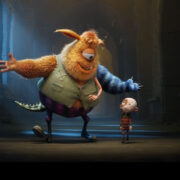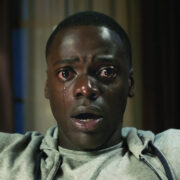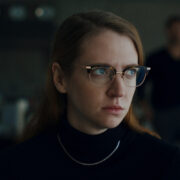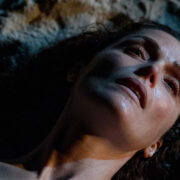SHANGHAI BLUES: Revisiting Tsui Hark’s Sparkling Screwball Comedy

Lee Jutton has directed short films starring a killer toaster,…
One thing is for certain about the genre-defying cinematic oeuvre of Tsui Hark: it has energy. After all, you don’t feel invigorated by the violent nihilism of Dangerous Encounters of the First Kind, the madcap action comedy of Peking Opera Blues, or the martial arts madness of Once Upon a Time in China and its sequels, you must be sleepwalking through life, or at the very least cinema. So it makes sense that in 1984, Tsui would take on a genre that had been synonymous with energy ever since Howard Hawks steered John Barrymore and Carole Lombard through the rapid-fire repartee and persistent pratfalls of Twentieth Century fifty years prior: the screwball comedy. The result? Shanghai Blues, a vibrant mix of slapstick, sweetness, and song that has been beautifully restored in 4K for its 40th anniversary.
It Happened One Night
In 1937, with the Second Sino-Japanese War underway, a nightclub clown turned soldier, Tung (Kenny Bee), meets a young woman, Shu (Sylvia Chang), under a bridge during a bombing raid. Despite not being able to see each other’s faces clearly in the darkness, the smitten pair vow to meet again when the war is over. However, as in all screwball comedies, nothing is ever easy, though it is often quite hilarious.
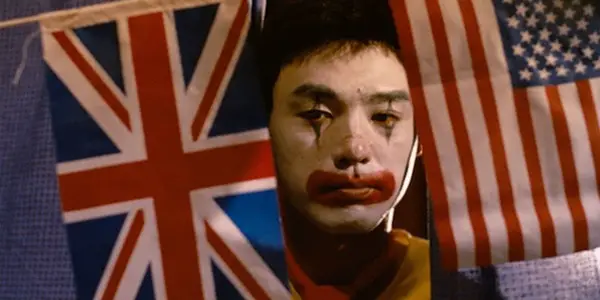
Ten years later, amid the ruins of postwar Shanghai, Tung is playing the tuba and seeking success as a songwriter while Shu is working as a nightclub singer. The two of them still dream of finding each other again, but they’re not sure who exactly they’re looking for, let alone where to start looking. Fate appears to be bringing them together when Tung moves into the flat above Shu’s, but it also conspires to keep them apart when Shu takes in Stool (Sally Yeh), a nutty young woman recently arrived in Shanghai who Tung mistakes for his long-lost love; naturally, she falls in love with him in return. It’s a tangled love triangle the likes of which Ernst Lubitsch would have adored, with a healthy dose of backstage hijinks and bittersweet longing thrown in.
Love Crazy
Shanghai Blues portrays the hardscrabble side of post-war life—struggling to find paying work, living in run-down, bombed-out buildings—while also shining a light on the dark comedy that can be found in such situations. Like any good screwball, the humor is heightened to the point of satire, and the pace is fast enough to make your head spin. (And, naturally, there are a couple of bits that have not aged well.) Many of the most delightful scenes in the film take place in the nightclub where Shu works, including when Shu accidentally performs in a dress with a hole in the rear that her dance partner struggles to cover (shades of the Hawks classic Bringing Up Baby) and when she is rolled out on stage while essentially in the bath—a situation that she turns to her advantage by performing a cheeky number in the suds. Another highlight is an extended comedy of errors in which Stool mistakenly thinks she’s interviewing for a job as a kindergarten teacher when she’s actually auditioning for a beauty pageant; her growing outrage at each mounting confusion is absolutely ridiculous but undeniably funny.
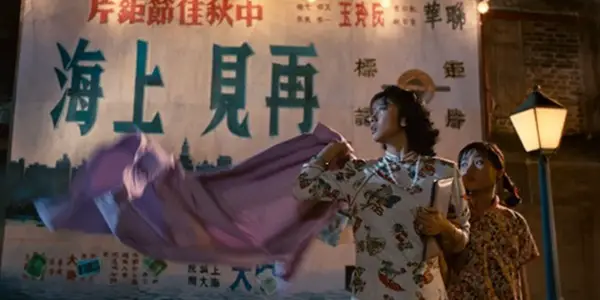
The trio of likable leads does a marvelous job guiding the audience through the insanity that ensues throughout Shanghai Blues, not to mention softening the edges of some of the film’s more grating attempts at humor. The contrast between Chang’s street-smart singer Shu and Yeh’s naive newcomer Stool naturally lends itself to laughs; watching them bond like sisters will warm your heart, though realizing they have both fallen for the same man will break it. That man, as embodied by Bee, is a good-hearted goofball in the Jimmy Stewart mold who just wants to get the gig and girl of his dreams. The world they occupy is meticulously crafted and saturated in vivid color, from the stylish dresses that Stool covets in Shu’s closet to the neon-lit rooftop where Tung practices his violin, the lovely, lilting music transporting Stool to a world where even the most lofty dreams can come true. (She abruptly crashes back down to earth when she spots a rat.) This is a world where everyone can and must start over again, rebuilding their lives from the rubble that still litters the streets and reinventing themselves as survivors.
Conclusion
Filled with nostalgia for the past as well as hope for the future, Shanghai Blues is a romp worth revisiting as it re-enters theaters.
The new 4K restoration of Shanghai Blues begins screening at Metrograph in New York on June 20, 2025.
Does content like this matter to you?
Become a Member and support film journalism. Unlock access to all of Film Inquiry`s great articles. Join a community of like-minded readers who are passionate about cinema - get access to our private members Network, give back to independent filmmakers, and more.
Lee Jutton has directed short films starring a killer toaster, a killer Christmas tree, and a not-killer leopard. Her writing has appeared in publications such as Film School Rejects, Bitch: A Feminist Response to Pop Culture, Bitch Flicks, TV Fanatic, and Just Press Play. In addition to movies, she's also a big fan of soccer, BTS, and her two cats.





